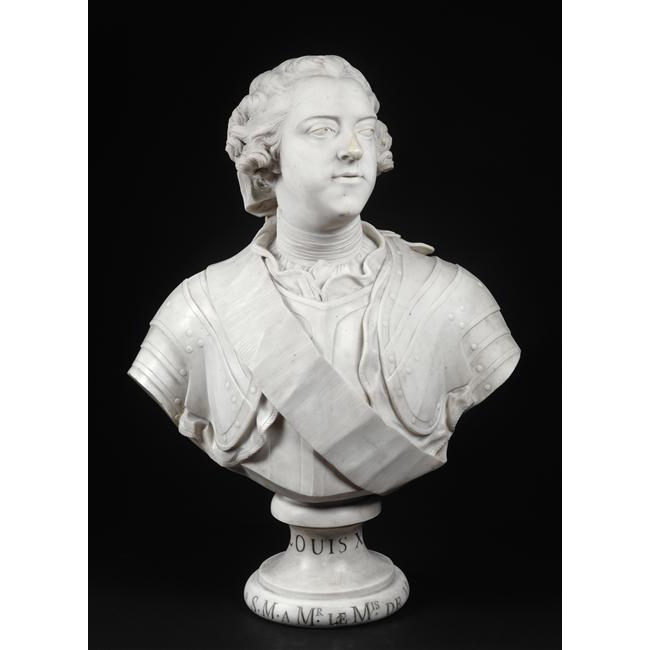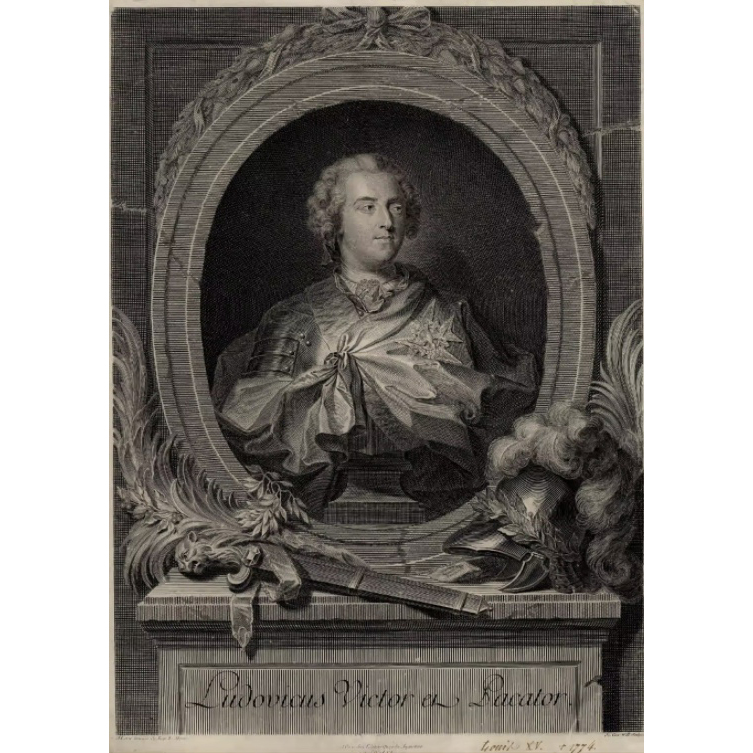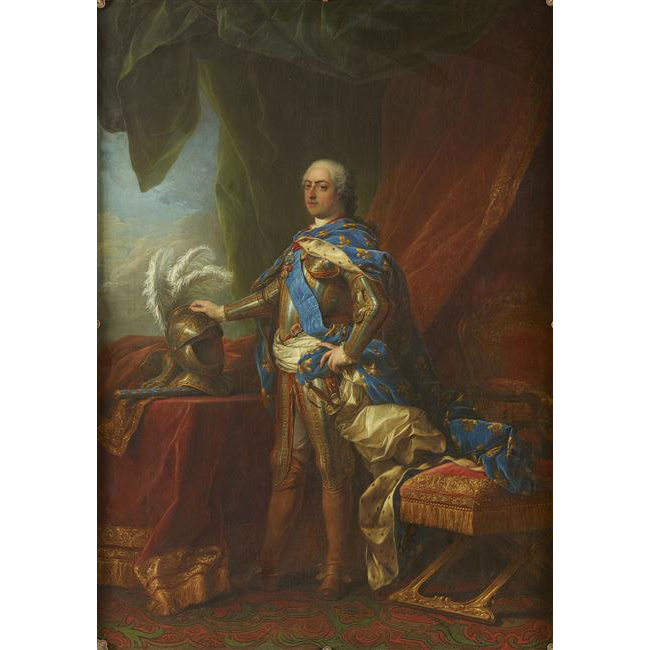Round box called bonbonnière opening in two parts mounted in 18k gold of two colors, inlaid with vertical bands of multicolored abalone with green and purple tones alternating with gold bands, lined with tortoiseshell.
The cover is inlaid with an oval gold medallion set with an oval miniature portrait painted on anonymous enamel depicting king Louis XV, dressed in armor with a coat of ermine fleurdelisé and wearing the cord of the Order of the Holy Spirit.
Slight lack of abalone.
Paris, 1771.
Marks of charge and discharge of Julien Alaterre (1768-1774).
Incomplete silversmith's mark: [?] C, one star.
Posterior control hallmarks including that of the 3rd title (1819-1838) and that with an eagle's head (after 1838).
Gross weight: 77,0 g. D. 6.5 cm.
- Most probably presented by the king Louis XV.
- A La Vieille Cité, 350 rue Saint-Honoré, Paris.
- Collection Comte et Comtesse Edouard de Ribes (1923-2013).
- Their sale, La Collection Ribes I, Sotheby's Paris, December 11, 2019, lot 51.
Since the first half of the 17th century, the boxes housing miniature portraits, round, oval or rectangular, have been primarily objects of feeling. From the 1660s, it was King Louis XIV who initiated the fact that these precious objects would also become instruments of royal power, distributed by the hundreds as marks of honor to foreign dignitaries, men of war and faithful servants. of the monarchy. Continuing this tradition which will last until the 20th century through successive reigns, Louis XV will experience the golden age of these boxes and snuffboxes. We then witness a great diversity of decorations, playing with materials such as abalone, finely chosen for its polychromy, shapes, technical innovations, the presence of inlaid stones, portraits, etc.
It is interesting to note here that we reused a portrait of the King older than the date of manufacture of the box, which was common especially during the long reign of Louis XV (58 years). Indeed, the unfortunately anonymous portrait, painted on enamel, a technique used especially at the beginning of his reign by artists like Charles Boit (1662-1727), seems to be inspired by several models prior to 1771, date of execution of the box. . The physiognomy of Louis XV is closer to the years 1740-1750, and in particular the bust of Jean-Baptiste II Lemoyne (1704-1778) from 1749 preserved in Versailles (inv. MV9045, ill. 1), of which an engraving from 1751 resumes the model (ill. 2). The Cabinet des Drawings du Louvre also has an unfortunately anonymous miniature painted on ivory, dated around 1745, so close to ours that one could imagine the same hand or even a direct influence of one on the other (ill. 3). Finally, one could note an influence of the lost portrait by Carle Van Loo (1705-1765) exhibited at the Salon of 1751, of which the Palace of Versailles keeps a copy (inv. MV 3751, ill. 4).
- Anonymous, Portrait of Louis XV, miniature on ivory in the Cabinet des Drawings of the Louvre Museum, inv. 35155 (ill. 3).
- Louis-François Aubert (? -1755), Portrait of Louis XV, miniature on enamel dated 1752, sold at Christie's London, Centuries of Style: Silver, European Ceramics, Portrait Miniatures and Gold Boxes, November 27-28, 2012, lot 300 (ill. 5).
- A similar gold candy box inlaid with multicolored abalone and decorated with a miniature portrait of Madame Sophie de France (1734-1782), daughter of Louis XV, circa 1765, sold at Sotheby's Paris, June 26, 2013, lot 69 (ill. 6).















